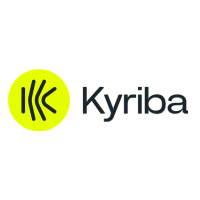 https://treasuryxl.com/wp-content/uploads/2024/12/FIS-BLOGS-featured-4.png
200
200
treasuryXL
https://treasuryxl.com/wp-content/uploads/2018/07/treasuryXL-logo-300x56.png
treasuryXL2025-01-08 07:00:412025-01-07 10:39:33Unlocking Value: How TMS Delivers Measurable ROI for Corporate Treasury
https://treasuryxl.com/wp-content/uploads/2024/12/FIS-BLOGS-featured-4.png
200
200
treasuryXL
https://treasuryxl.com/wp-content/uploads/2018/07/treasuryXL-logo-300x56.png
treasuryXL2025-01-08 07:00:412025-01-07 10:39:33Unlocking Value: How TMS Delivers Measurable ROI for Corporate TreasuryFraud and cyber security threats are significant risks for corporate treasury departments. Corporate treasury is responsible for managing a company’s financial resources, including its cash, credit, investments, and financial risks. In today’s digital world, corporate treasury departments face a range of threats from fraud and cyber security breaches.
Fraud in Treasury
Fraud can come in many forms, including employee fraud, vendor fraud, financial statement fraud and BEC fraud. Employee fraud refers to any fraudulent activity committed by an employee, such as embezzlement, theft, or false expenses. Vendor fraud refers to fraudulent activity by a vendor or supplier, such as overcharging or providing false invoices. Financial statement fraud refers to the manipulation of a company’s financial statements, such as by misstating revenues or assets. BEC scams, also known as Business email compromise, are fraud attempts aimed at businesses through email with the purpose of stealing money.
Cybersecurity in Treasury
Cybersecurity threats can include phishing attacks, malware, ransomware, and data breaches. Phishing attacks involve the use of fake emails or websites to trick individuals into revealing sensitive information, such as login credentials or financial information. Malware is malicious software that is designed to damage or disrupt computer systems. Ransomware is a type of malware that encrypts a victim’s data, demanding payment in exchange for the decryption key. Data breaches involve the unauthorized access of sensitive information, such as customer data or financial records.
How can the treasury department protect from fraud & cyber security?
To protect against these threats, corporate treasury departments should have robust internal controls and policies in place. Internal controls refer to the processes and procedures that a company has in place to ensure the accuracy and reliability of its financial information, as well as the effectiveness and efficiency of its operations. Some examples of internal controls that can be relevant for corporate treasury include:
- Separation of duties: This involves dividing tasks among different individuals or departments, so that no one person has complete control over a process. For example, the person who prepares the company’s bank deposits should not be the same person who reconciles the company’s bank statements.
- Background checks: Conducting background checks on employees can help to identify any potential red flags, such as a criminal history or a history of financial problems.
- Strong passwords and multifactor authentication: Using strong passwords and implementing multifactor authentication can help to prevent unauthorized access to financial systems and data. Multifactor authentication involves using more than one method to verify a user’s identity, such as a password combined with a fingerprint or a one-time code sent to a phone.
- Employee training: Regularly training employees on how to recognize and prevent fraud and cyber threats can help to reduce the risk of incidents occurring. This can include training on topics such as phishing scams, password security, and the importance of reporting suspicious activity.
It is also important for corporate treasury departments to have a plan in place for responding to a fraud or cyber security incident. This can include working with law enforcement and cybersecurity experts to investigate and mitigate the impact of the incident. The plan should also include procedures for communicating with relevant stakeholders, such as employees, customers, and shareholders.
Summary fraud & cyber security in corporate treasury
Overall, the key to protecting against fraud and cyber security threats in corporate treasury is to stay vigilant, regularly review and update policies and procedures, and have a plan in place for responding to incidents. By taking these steps, corporate treasury departments can help to safeguard their company’s financial resources and reputation.
Click and Scroll! Here are more articles that you might like…
 https://treasuryxl.com/wp-content/uploads/2024/12/FIS-BLOGS-featured-4.png
200
200
treasuryXL
https://treasuryxl.com/wp-content/uploads/2018/07/treasuryXL-logo-300x56.png
treasuryXL2025-01-08 07:00:412025-01-07 10:39:33Unlocking Value: How TMS Delivers Measurable ROI for Corporate Treasury
https://treasuryxl.com/wp-content/uploads/2024/12/FIS-BLOGS-featured-4.png
200
200
treasuryXL
https://treasuryxl.com/wp-content/uploads/2018/07/treasuryXL-logo-300x56.png
treasuryXL2025-01-08 07:00:412025-01-07 10:39:33Unlocking Value: How TMS Delivers Measurable ROI for Corporate Treasury https://treasuryxl.com/wp-content/uploads/2023/12/FDW-Digital-Finance-Summit-200.png
200
200
treasuryXL
https://treasuryxl.com/wp-content/uploads/2018/07/treasuryXL-logo-300x56.png
treasuryXL2023-12-13 07:00:282023-12-14 09:08:40Update Digital Finance Summit 2023
https://treasuryxl.com/wp-content/uploads/2023/12/FDW-Digital-Finance-Summit-200.png
200
200
treasuryXL
https://treasuryxl.com/wp-content/uploads/2018/07/treasuryXL-logo-300x56.png
treasuryXL2023-12-13 07:00:282023-12-14 09:08:40Update Digital Finance Summit 2023 https://treasuryxl.com/wp-content/uploads/2023/08/Poll-results-13.png
200
200
treasuryXL
https://treasuryxl.com/wp-content/uploads/2018/07/treasuryXL-logo-300x56.png
treasuryXL2023-08-22 12:00:412023-08-28 13:52:30Which Solution would enhance the Safety and Security of Financial Processes?
https://treasuryxl.com/wp-content/uploads/2023/08/Poll-results-13.png
200
200
treasuryXL
https://treasuryxl.com/wp-content/uploads/2018/07/treasuryXL-logo-300x56.png
treasuryXL2023-08-22 12:00:412023-08-28 13:52:30Which Solution would enhance the Safety and Security of Financial Processes?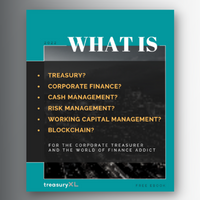 https://treasuryxl.com/wp-content/uploads/2022/05/eBook-gray.png
200
200
treasuryXL
https://treasuryxl.com/wp-content/uploads/2018/07/treasuryXL-logo-300x56.png
treasuryXL2023-02-23 08:00:492023-02-21 14:21:19Unlock Your Treasury Expertise Today – Download Our Free eBook!
https://treasuryxl.com/wp-content/uploads/2022/05/eBook-gray.png
200
200
treasuryXL
https://treasuryxl.com/wp-content/uploads/2018/07/treasuryXL-logo-300x56.png
treasuryXL2023-02-23 08:00:492023-02-21 14:21:19Unlock Your Treasury Expertise Today – Download Our Free eBook!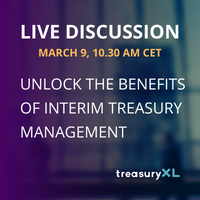 https://treasuryxl.com/wp-content/uploads/2023/02/unlock-200x200-1.png
200
200
treasuryXL
https://treasuryxl.com/wp-content/uploads/2018/07/treasuryXL-logo-300x56.png
treasuryXL2023-02-14 07:00:082023-04-06 09:55:32LIVE SESSION | Unlock the Benefits of Interim Treasury Management
https://treasuryxl.com/wp-content/uploads/2023/02/unlock-200x200-1.png
200
200
treasuryXL
https://treasuryxl.com/wp-content/uploads/2018/07/treasuryXL-logo-300x56.png
treasuryXL2023-02-14 07:00:082023-04-06 09:55:32LIVE SESSION | Unlock the Benefits of Interim Treasury Management https://treasuryxl.com/wp-content/uploads/2023/02/eurofinance-200.png
200
200
treasuryXL
https://treasuryxl.com/wp-content/uploads/2018/07/treasuryXL-logo-300x56.png
treasuryXL2023-02-07 07:00:202023-02-06 10:33:56Effective Finance & Treasury in Africa | Eurofinance
https://treasuryxl.com/wp-content/uploads/2023/02/eurofinance-200.png
200
200
treasuryXL
https://treasuryxl.com/wp-content/uploads/2018/07/treasuryXL-logo-300x56.png
treasuryXL2023-02-07 07:00:202023-02-06 10:33:56Effective Finance & Treasury in Africa | Eurofinance https://treasuryxl.com/wp-content/uploads/2022/05/eBook-gray.png
200
200
treasuryXL
https://treasuryxl.com/wp-content/uploads/2018/07/treasuryXL-logo-300x56.png
treasuryXL2022-10-27 10:20:362022-10-27 10:29:22Brush up on your treasury knowledge? Get our eBook: What is Treasury?
https://treasuryxl.com/wp-content/uploads/2022/05/eBook-gray.png
200
200
treasuryXL
https://treasuryxl.com/wp-content/uploads/2018/07/treasuryXL-logo-300x56.png
treasuryXL2022-10-27 10:20:362022-10-27 10:29:22Brush up on your treasury knowledge? Get our eBook: What is Treasury?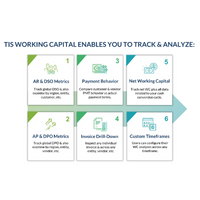 https://treasuryxl.com/wp-content/uploads/2022/10/tis-200-27e.png
200
200
treasuryXL
https://treasuryxl.com/wp-content/uploads/2018/07/treasuryXL-logo-300x56.png
treasuryXL2022-10-27 07:00:212022-10-24 15:36:03Understanding the Importance of Working Capital for Treasury
https://treasuryxl.com/wp-content/uploads/2022/10/tis-200-27e.png
200
200
treasuryXL
https://treasuryxl.com/wp-content/uploads/2018/07/treasuryXL-logo-300x56.png
treasuryXL2022-10-27 07:00:212022-10-24 15:36:03Understanding the Importance of Working Capital for Treasury https://treasuryxl.com/wp-content/uploads/2022/10/Pieter-Vienna.png
200
200
treasuryXL
https://treasuryxl.com/wp-content/uploads/2018/07/treasuryXL-logo-300x56.png
treasuryXL2022-10-12 14:42:432023-01-02 14:17:36Eurofinance remains THE event for corporate treasurers | By Pieter de Kiewit
https://treasuryxl.com/wp-content/uploads/2022/10/Pieter-Vienna.png
200
200
treasuryXL
https://treasuryxl.com/wp-content/uploads/2018/07/treasuryXL-logo-300x56.png
treasuryXL2022-10-12 14:42:432023-01-02 14:17:36Eurofinance remains THE event for corporate treasurers | By Pieter de Kiewit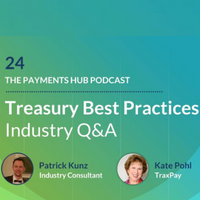 https://treasuryxl.com/wp-content/uploads/2022/09/tis-200-podcast.png
200
200
treasuryXL
https://treasuryxl.com/wp-content/uploads/2018/07/treasuryXL-logo-300x56.png
treasuryXL2022-10-06 07:00:592022-10-05 15:02:45Don’t miss the latest episode of TIS’ Payments Hub Podcast!
https://treasuryxl.com/wp-content/uploads/2022/09/tis-200-podcast.png
200
200
treasuryXL
https://treasuryxl.com/wp-content/uploads/2018/07/treasuryXL-logo-300x56.png
treasuryXL2022-10-06 07:00:592022-10-05 15:02:45Don’t miss the latest episode of TIS’ Payments Hub Podcast! https://treasuryxl.com/wp-content/uploads/2022/09/WEBINAR.png
200
200
treasuryXL
https://treasuryxl.com/wp-content/uploads/2018/07/treasuryXL-logo-300x56.png
treasuryXL2022-09-29 07:00:452023-01-02 14:17:59LIVE SESSION | My Treasury Career Development & How the Register Treasurer education contributed
https://treasuryxl.com/wp-content/uploads/2022/09/WEBINAR.png
200
200
treasuryXL
https://treasuryxl.com/wp-content/uploads/2018/07/treasuryXL-logo-300x56.png
treasuryXL2022-09-29 07:00:452023-01-02 14:17:59LIVE SESSION | My Treasury Career Development & How the Register Treasurer education contributed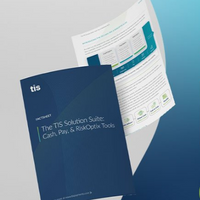 https://treasuryxl.com/wp-content/uploads/2022/09/tis-facstheet-200.png
200
200
treasuryXL
https://treasuryxl.com/wp-content/uploads/2018/07/treasuryXL-logo-300x56.png
treasuryXL2022-09-21 07:00:172022-09-19 11:56:37Factsheet: The TIS Solution Suite
https://treasuryxl.com/wp-content/uploads/2022/09/tis-facstheet-200.png
200
200
treasuryXL
https://treasuryxl.com/wp-content/uploads/2018/07/treasuryXL-logo-300x56.png
treasuryXL2022-09-21 07:00:172022-09-19 11:56:37Factsheet: The TIS Solution Suite https://treasuryxl.com/wp-content/uploads/2022/09/blog-pieter-19e-200.png
200
200
treasuryXL
https://treasuryxl.com/wp-content/uploads/2018/07/treasuryXL-logo-300x56.png
treasuryXL2022-09-19 07:00:032023-01-02 14:18:20Where did the treasury applicants go? | By Pieter de Kiewit
https://treasuryxl.com/wp-content/uploads/2022/09/blog-pieter-19e-200.png
200
200
treasuryXL
https://treasuryxl.com/wp-content/uploads/2018/07/treasuryXL-logo-300x56.png
treasuryXL2022-09-19 07:00:032023-01-02 14:18:20Where did the treasury applicants go? | By Pieter de Kiewit https://treasuryxl.com/wp-content/uploads/2022/08/kyriba-200-23e.png
200
200
treasuryXL
https://treasuryxl.com/wp-content/uploads/2018/07/treasuryXL-logo-300x56.png
treasuryXL2022-09-12 07:00:262022-09-08 16:49:27Could Stablecoins Drive Payment Innovation?
https://treasuryxl.com/wp-content/uploads/2022/08/kyriba-200-23e.png
200
200
treasuryXL
https://treasuryxl.com/wp-content/uploads/2018/07/treasuryXL-logo-300x56.png
treasuryXL2022-09-12 07:00:262022-09-08 16:49:27Could Stablecoins Drive Payment Innovation? https://treasuryxl.com/wp-content/uploads/2022/05/eBook-gray.png
200
200
treasuryXL
https://treasuryxl.com/wp-content/uploads/2018/07/treasuryXL-logo-300x56.png
treasuryXL2022-09-08 11:40:442022-09-08 11:59:28Quickly refresh your treasury knowledge? Download our eBook: What is Treasury?
https://treasuryxl.com/wp-content/uploads/2022/05/eBook-gray.png
200
200
treasuryXL
https://treasuryxl.com/wp-content/uploads/2018/07/treasuryXL-logo-300x56.png
treasuryXL2022-09-08 11:40:442022-09-08 11:59:28Quickly refresh your treasury knowledge? Download our eBook: What is Treasury? https://treasuryxl.com/wp-content/uploads/2022/09/Cash-and-Treasurer-featured-200x200-1.png
200
200
treasuryXL
https://treasuryxl.com/wp-content/uploads/2018/07/treasuryXL-logo-300x56.png
treasuryXL2022-09-06 11:00:102022-09-06 12:46:51RECAP | Cash and Treasury Management Event Copenhagen | By Pieter de Kiewit
https://treasuryxl.com/wp-content/uploads/2022/09/Cash-and-Treasurer-featured-200x200-1.png
200
200
treasuryXL
https://treasuryxl.com/wp-content/uploads/2018/07/treasuryXL-logo-300x56.png
treasuryXL2022-09-06 11:00:102022-09-06 12:46:51RECAP | Cash and Treasury Management Event Copenhagen | By Pieter de Kiewit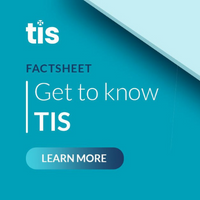 https://treasuryxl.com/wp-content/uploads/2022/09/tis-facsheet-200.png
200
200
treasuryXL
https://treasuryxl.com/wp-content/uploads/2018/07/treasuryXL-logo-300x56.png
treasuryXL2022-09-05 07:00:522022-09-01 09:56:33Get to Know TIS
https://treasuryxl.com/wp-content/uploads/2022/09/tis-facsheet-200.png
200
200
treasuryXL
https://treasuryxl.com/wp-content/uploads/2018/07/treasuryXL-logo-300x56.png
treasuryXL2022-09-05 07:00:522022-09-01 09:56:33Get to Know TIS https://treasuryxl.com/wp-content/uploads/2022/08/kyriba-200x-8-aug.png
200
200
treasuryXL
https://treasuryxl.com/wp-content/uploads/2018/07/treasuryXL-logo-300x56.png
treasuryXL2022-08-08 07:00:032022-08-05 10:12:32What Does Real-time Connectivity Mean for Your Organization?
https://treasuryxl.com/wp-content/uploads/2022/08/kyriba-200x-8-aug.png
200
200
treasuryXL
https://treasuryxl.com/wp-content/uploads/2018/07/treasuryXL-logo-300x56.png
treasuryXL2022-08-08 07:00:032022-08-05 10:12:32What Does Real-time Connectivity Mean for Your Organization? https://treasuryxl.com/wp-content/uploads/2022/08/22cash-featured-200x200px4.jpg
200
200
treasuryXL
https://treasuryxl.com/wp-content/uploads/2018/07/treasuryXL-logo-300x56.png
treasuryXL2022-08-04 09:21:162022-08-04 09:21:16Cash & Treasury Management: Join The World’s Leading Experts in Copenhagen
https://treasuryxl.com/wp-content/uploads/2022/08/22cash-featured-200x200px4.jpg
200
200
treasuryXL
https://treasuryxl.com/wp-content/uploads/2018/07/treasuryXL-logo-300x56.png
treasuryXL2022-08-04 09:21:162022-08-04 09:21:16Cash & Treasury Management: Join The World’s Leading Experts in Copenhagen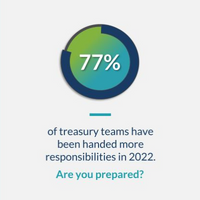 https://treasuryxl.com/wp-content/uploads/2022/07/tis-200-28-7.png
200
200
treasuryXL
https://treasuryxl.com/wp-content/uploads/2018/07/treasuryXL-logo-300x56.png
treasuryXL2022-07-28 07:00:282022-08-08 14:23:13The State of Treasury in 2022: Research Summary
https://treasuryxl.com/wp-content/uploads/2022/07/tis-200-28-7.png
200
200
treasuryXL
https://treasuryxl.com/wp-content/uploads/2018/07/treasuryXL-logo-300x56.png
treasuryXL2022-07-28 07:00:282022-08-08 14:23:13The State of Treasury in 2022: Research Summary https://treasuryxl.com/wp-content/uploads/2022/06/kyriba-200-21e.png
200
200
treasuryXL
https://treasuryxl.com/wp-content/uploads/2018/07/treasuryXL-logo-300x56.png
treasuryXL2022-06-21 07:00:332022-06-16 15:27:50Perfecting the Cash Forecast
https://treasuryxl.com/wp-content/uploads/2022/06/kyriba-200-21e.png
200
200
treasuryXL
https://treasuryxl.com/wp-content/uploads/2018/07/treasuryXL-logo-300x56.png
treasuryXL2022-06-21 07:00:332022-06-16 15:27:50Perfecting the Cash Forecast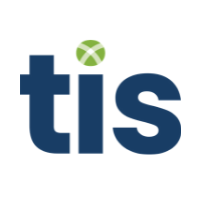 https://treasuryxl.com/wp-content/uploads/2021/06/TIS_new-logo.png
200
200
treasuryXL
https://treasuryxl.com/wp-content/uploads/2018/07/treasuryXL-logo-300x56.png
treasuryXL2022-06-15 07:00:042022-06-13 09:22:37Build vs Buy: How Should Treasury Teams Upgrade Their Bank Connectivity & Payments Stack?
https://treasuryxl.com/wp-content/uploads/2021/06/TIS_new-logo.png
200
200
treasuryXL
https://treasuryxl.com/wp-content/uploads/2018/07/treasuryXL-logo-300x56.png
treasuryXL2022-06-15 07:00:042022-06-13 09:22:37Build vs Buy: How Should Treasury Teams Upgrade Their Bank Connectivity & Payments Stack? https://treasuryxl.com/wp-content/uploads/2022/06/treasuryXL-200x200-1.jpg
200
200
treasuryXL
https://treasuryxl.com/wp-content/uploads/2018/07/treasuryXL-logo-300x56.png
treasuryXL2022-06-13 07:00:552022-06-10 11:50:23Treasury in transition – explore the agenda for EuroFinance International Treasury Management
https://treasuryxl.com/wp-content/uploads/2022/06/treasuryXL-200x200-1.jpg
200
200
treasuryXL
https://treasuryxl.com/wp-content/uploads/2018/07/treasuryXL-logo-300x56.png
treasuryXL2022-06-13 07:00:552022-06-10 11:50:23Treasury in transition – explore the agenda for EuroFinance International Treasury Management https://treasuryxl.com/wp-content/uploads/2022/06/reminder-webinar.png
200
200
treasuryXL
https://treasuryxl.com/wp-content/uploads/2018/07/treasuryXL-logo-300x56.png
treasuryXL2022-06-06 07:00:242022-06-02 15:49:29REMINDER WEBINAR | The Evolution of Open banking, Connectivity and Real time: How will APIs change the Treasurer’s daily life?
https://treasuryxl.com/wp-content/uploads/2022/06/reminder-webinar.png
200
200
treasuryXL
https://treasuryxl.com/wp-content/uploads/2018/07/treasuryXL-logo-300x56.png
treasuryXL2022-06-06 07:00:242022-06-02 15:49:29REMINDER WEBINAR | The Evolution of Open banking, Connectivity and Real time: How will APIs change the Treasurer’s daily life? https://treasuryxl.com/wp-content/uploads/2022/05/Kyriba-session-June-14.png
200
200
treasuryXL
https://treasuryxl.com/wp-content/uploads/2018/07/treasuryXL-logo-300x56.png
treasuryXL2022-05-27 12:08:072022-05-27 12:08:07LIVE SESSION | The Evolution of Open banking, Connectivity and Real time: How will APIs change the Treasurer’s daily life?
https://treasuryxl.com/wp-content/uploads/2022/05/Kyriba-session-June-14.png
200
200
treasuryXL
https://treasuryxl.com/wp-content/uploads/2018/07/treasuryXL-logo-300x56.png
treasuryXL2022-05-27 12:08:072022-05-27 12:08:07LIVE SESSION | The Evolution of Open banking, Connectivity and Real time: How will APIs change the Treasurer’s daily life?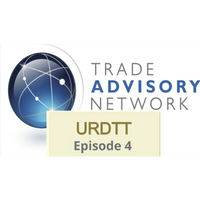 https://treasuryxl.com/wp-content/uploads/2022/05/Kopie-van-urdtt-ep-3-200.png
200
200
treasuryXL
https://treasuryxl.com/wp-content/uploads/2018/07/treasuryXL-logo-300x56.png
treasuryXL2022-05-25 07:00:432023-07-05 09:35:23Digital rules (URDTT) for Trade Finance: Episode 4
https://treasuryxl.com/wp-content/uploads/2022/05/Kopie-van-urdtt-ep-3-200.png
200
200
treasuryXL
https://treasuryxl.com/wp-content/uploads/2018/07/treasuryXL-logo-300x56.png
treasuryXL2022-05-25 07:00:432023-07-05 09:35:23Digital rules (URDTT) for Trade Finance: Episode 4 https://treasuryxl.com/wp-content/uploads/2020/05/xe-22-5-200x200-1.png
200
200
treasuryXL
https://treasuryxl.com/wp-content/uploads/2018/07/treasuryXL-logo-300x56.png
treasuryXL2022-05-22 07:00:542023-05-16 15:49:05The Most Common Questions About Money Transfer
https://treasuryxl.com/wp-content/uploads/2020/05/xe-22-5-200x200-1.png
200
200
treasuryXL
https://treasuryxl.com/wp-content/uploads/2018/07/treasuryXL-logo-300x56.png
treasuryXL2022-05-22 07:00:542023-05-16 15:49:05The Most Common Questions About Money Transfer https://treasuryxl.com/wp-content/uploads/2022/05/kyriba-200-19e.png
200
200
treasuryXL
https://treasuryxl.com/wp-content/uploads/2018/07/treasuryXL-logo-300x56.png
treasuryXL2022-05-19 07:00:492023-06-28 09:39:49The Role of APIs in Strategic Cash Forecasting
https://treasuryxl.com/wp-content/uploads/2022/05/kyriba-200-19e.png
200
200
treasuryXL
https://treasuryxl.com/wp-content/uploads/2018/07/treasuryXL-logo-300x56.png
treasuryXL2022-05-19 07:00:492023-06-28 09:39:49The Role of APIs in Strategic Cash Forecasting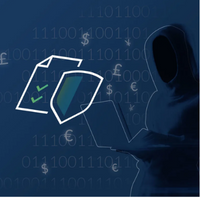 https://treasuryxl.com/wp-content/uploads/2022/05/tis-200-17e.png
200
200
treasuryXL
https://treasuryxl.com/wp-content/uploads/2018/07/treasuryXL-logo-300x56.png
treasuryXL2022-05-17 07:00:062022-05-16 12:04:23Fraud Check Up
https://treasuryxl.com/wp-content/uploads/2022/05/tis-200-17e.png
200
200
treasuryXL
https://treasuryxl.com/wp-content/uploads/2018/07/treasuryXL-logo-300x56.png
treasuryXL2022-05-17 07:00:062022-05-16 12:04:23Fraud Check Up https://treasuryxl.com/wp-content/uploads/2022/05/eBook-gray.png
200
200
treasuryXL
https://treasuryxl.com/wp-content/uploads/2018/07/treasuryXL-logo-300x56.png
treasuryXL2022-05-16 07:00:382022-08-15 14:52:05Subscribe and receive your 41 pages ‘easy-to-read’ eBook, What is Treasury?
https://treasuryxl.com/wp-content/uploads/2022/05/eBook-gray.png
200
200
treasuryXL
https://treasuryxl.com/wp-content/uploads/2018/07/treasuryXL-logo-300x56.png
treasuryXL2022-05-16 07:00:382022-08-15 14:52:05Subscribe and receive your 41 pages ‘easy-to-read’ eBook, What is Treasury?
The world’s largest treasury event is returning to Vienna in September | 10% discount via treasuryXL
 https://treasuryxl.com/wp-content/uploads/2022/04/kyriba-21e-200.png
200
200
treasuryXL
https://treasuryxl.com/wp-content/uploads/2018/07/treasuryXL-logo-300x56.png
treasuryXL2022-04-21 07:00:212022-04-21 09:00:33Effective API Strategies Go Beyond Banks & Payments
https://treasuryxl.com/wp-content/uploads/2022/04/kyriba-21e-200.png
200
200
treasuryXL
https://treasuryxl.com/wp-content/uploads/2018/07/treasuryXL-logo-300x56.png
treasuryXL2022-04-21 07:00:212022-04-21 09:00:33Effective API Strategies Go Beyond Banks & Payments https://treasuryxl.com/wp-content/uploads/2022/04/FSM-Banner-200x200-Englisch-v01-MN-2022-03-03.jpg
200
200
treasuryXL
https://treasuryxl.com/wp-content/uploads/2018/07/treasuryXL-logo-300x56.png
treasuryXL2022-04-20 12:05:102022-04-20 12:07:30Attend the 33rd Finance Symposium | 18-20 May 2022 | Mannheim
https://treasuryxl.com/wp-content/uploads/2022/04/FSM-Banner-200x200-Englisch-v01-MN-2022-03-03.jpg
200
200
treasuryXL
https://treasuryxl.com/wp-content/uploads/2018/07/treasuryXL-logo-300x56.png
treasuryXL2022-04-20 12:05:102022-04-20 12:07:30Attend the 33rd Finance Symposium | 18-20 May 2022 | Mannheim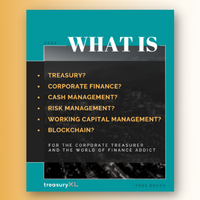 https://treasuryxl.com/wp-content/uploads/2022/04/eBook-200x200-1.png
200
200
treasuryXL
https://treasuryxl.com/wp-content/uploads/2018/07/treasuryXL-logo-300x56.png
treasuryXL2022-04-13 07:00:192023-02-07 14:23:00Your free eBook, What is Treasury?
https://treasuryxl.com/wp-content/uploads/2022/04/eBook-200x200-1.png
200
200
treasuryXL
https://treasuryxl.com/wp-content/uploads/2018/07/treasuryXL-logo-300x56.png
treasuryXL2022-04-13 07:00:192023-02-07 14:23:00Your free eBook, What is Treasury? https://treasuryxl.com/wp-content/uploads/2021/07/EuroFinance-pp.png
200
200
treasuryXL
https://treasuryxl.com/wp-content/uploads/2018/07/treasuryXL-logo-300x56.png
treasuryXL2022-04-08 12:16:452022-04-11 17:11:22EuroFinance International Treasury Management returns to Vienna | 21-23 September 2022
https://treasuryxl.com/wp-content/uploads/2021/07/EuroFinance-pp.png
200
200
treasuryXL
https://treasuryxl.com/wp-content/uploads/2018/07/treasuryXL-logo-300x56.png
treasuryXL2022-04-08 12:16:452022-04-11 17:11:22EuroFinance International Treasury Management returns to Vienna | 21-23 September 2022 https://treasuryxl.com/wp-content/uploads/2022/03/kyriba-23e-200.png
200
200
treasuryXL
https://treasuryxl.com/wp-content/uploads/2018/07/treasuryXL-logo-300x56.png
treasuryXL2022-03-23 07:00:252022-03-22 15:36:00When Is the Right Time to Move to APIs?
https://treasuryxl.com/wp-content/uploads/2022/03/kyriba-23e-200.png
200
200
treasuryXL
https://treasuryxl.com/wp-content/uploads/2018/07/treasuryXL-logo-300x56.png
treasuryXL2022-03-23 07:00:252022-03-22 15:36:00When Is the Right Time to Move to APIs?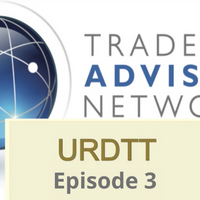 https://treasuryxl.com/wp-content/uploads/2022/03/urdtt-ep-3-200.png
200
200
treasuryXL
https://treasuryxl.com/wp-content/uploads/2018/07/treasuryXL-logo-300x56.png
treasuryXL2022-03-17 07:00:012023-07-05 09:35:37Digital rules (URDTT) for Trade Finance: Episode 3
https://treasuryxl.com/wp-content/uploads/2022/03/urdtt-ep-3-200.png
200
200
treasuryXL
https://treasuryxl.com/wp-content/uploads/2018/07/treasuryXL-logo-300x56.png
treasuryXL2022-03-17 07:00:012023-07-05 09:35:37Digital rules (URDTT) for Trade Finance: Episode 3 https://treasuryxl.com/wp-content/uploads/2022/02/Manual-Payments-Webinar-200-x-200-V2-1.png
200
200
treasuryXL
https://treasuryxl.com/wp-content/uploads/2018/07/treasuryXL-logo-300x56.png
treasuryXL2022-03-03 07:00:332022-12-29 13:07:40Live Webinar on March 10: A to Z of Secure Corporate Treasury Payments
https://treasuryxl.com/wp-content/uploads/2022/02/Manual-Payments-Webinar-200-x-200-V2-1.png
200
200
treasuryXL
https://treasuryxl.com/wp-content/uploads/2018/07/treasuryXL-logo-300x56.png
treasuryXL2022-03-03 07:00:332022-12-29 13:07:40Live Webinar on March 10: A to Z of Secure Corporate Treasury Payments https://treasuryxl.com/wp-content/uploads/2022/02/Website-200x200-1.jpg
200
200
treasuryXL
https://treasuryxl.com/wp-content/uploads/2018/07/treasuryXL-logo-300x56.png
treasuryXL2022-02-23 09:45:452022-02-22 16:16:43Effective Finance & Treasury in Africa event run by EuroFinance | London
https://treasuryxl.com/wp-content/uploads/2022/02/Website-200x200-1.jpg
200
200
treasuryXL
https://treasuryxl.com/wp-content/uploads/2018/07/treasuryXL-logo-300x56.png
treasuryXL2022-02-23 09:45:452022-02-22 16:16:43Effective Finance & Treasury in Africa event run by EuroFinance | London https://treasuryxl.com/wp-content/uploads/2022/02/DT-wim.png
200
200
treasuryXL
https://treasuryxl.com/wp-content/uploads/2018/07/treasuryXL-logo-300x56.png
treasuryXL2022-02-22 07:00:272022-02-22 15:48:51The Evolution of Legal Documents, The Next Step
https://treasuryxl.com/wp-content/uploads/2022/02/DT-wim.png
200
200
treasuryXL
https://treasuryxl.com/wp-content/uploads/2018/07/treasuryXL-logo-300x56.png
treasuryXL2022-02-22 07:00:272022-02-22 15:48:51The Evolution of Legal Documents, The Next Step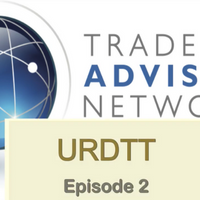 https://treasuryxl.com/wp-content/uploads/2022/02/URDTT-200x.png
200
200
treasuryXL
https://treasuryxl.com/wp-content/uploads/2018/07/treasuryXL-logo-300x56.png
treasuryXL2022-02-10 07:00:002023-06-27 10:28:17Digital rules (URDTT) for Trade Finance: Episode 2
https://treasuryxl.com/wp-content/uploads/2022/02/URDTT-200x.png
200
200
treasuryXL
https://treasuryxl.com/wp-content/uploads/2018/07/treasuryXL-logo-300x56.png
treasuryXL2022-02-10 07:00:002023-06-27 10:28:17Digital rules (URDTT) for Trade Finance: Episode 2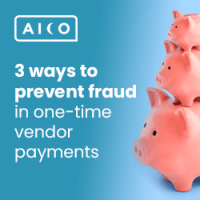 https://treasuryxl.com/wp-content/uploads/2022/02/3-ways-to-prevent-corporate-treasury-fraud-blog-thumbnail-e1644333785367.png
200
200
treasuryXL
https://treasuryxl.com/wp-content/uploads/2018/07/treasuryXL-logo-300x56.png
treasuryXL2022-02-09 07:00:222023-03-23 16:42:34Corporate Treasury: 3 ways to prevent fraud risk in one-time vendor payments
https://treasuryxl.com/wp-content/uploads/2022/02/3-ways-to-prevent-corporate-treasury-fraud-blog-thumbnail-e1644333785367.png
200
200
treasuryXL
https://treasuryxl.com/wp-content/uploads/2018/07/treasuryXL-logo-300x56.png
treasuryXL2022-02-09 07:00:222023-03-23 16:42:34Corporate Treasury: 3 ways to prevent fraud risk in one-time vendor payments https://treasuryxl.com/wp-content/uploads/2022/01/kyriba-200-1.png
200
200
treasuryXL
https://treasuryxl.com/wp-content/uploads/2018/07/treasuryXL-logo-300x56.png
treasuryXL2022-01-24 07:00:172022-12-29 14:37:11Digital Payments Transformation for 2022
https://treasuryxl.com/wp-content/uploads/2022/01/kyriba-200-1.png
200
200
treasuryXL
https://treasuryxl.com/wp-content/uploads/2018/07/treasuryXL-logo-300x56.png
treasuryXL2022-01-24 07:00:172022-12-29 14:37:11Digital Payments Transformation for 2022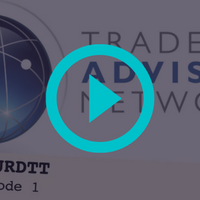 https://treasuryxl.com/wp-content/uploads/2022/01/Episode-1-URDTT_thumb.png
200
200
treasuryXL
https://treasuryxl.com/wp-content/uploads/2018/07/treasuryXL-logo-300x56.png
treasuryXL2022-01-10 07:00:532023-06-27 10:28:25Digital rules (URDTT) for Trade Finance: What, How and When?
https://treasuryxl.com/wp-content/uploads/2022/01/Episode-1-URDTT_thumb.png
200
200
treasuryXL
https://treasuryxl.com/wp-content/uploads/2018/07/treasuryXL-logo-300x56.png
treasuryXL2022-01-10 07:00:532023-06-27 10:28:25Digital rules (URDTT) for Trade Finance: What, How and When? https://treasuryxl.com/wp-content/uploads/2021/12/kyriba-200-14-12.png
200
200
treasuryXL
https://treasuryxl.com/wp-content/uploads/2018/07/treasuryXL-logo-300x56.png
treasuryXL2021-12-15 07:00:372022-12-29 13:55:15Currency Volatility Is A Catalyst for Response by Treasury
https://treasuryxl.com/wp-content/uploads/2021/12/kyriba-200-14-12.png
200
200
treasuryXL
https://treasuryxl.com/wp-content/uploads/2018/07/treasuryXL-logo-300x56.png
treasuryXL2021-12-15 07:00:372022-12-29 13:55:15Currency Volatility Is A Catalyst for Response by Treasury https://treasuryxl.com/wp-content/uploads/2021/11/wim-kok-200.png
200
200
treasuryXL
https://treasuryxl.com/wp-content/uploads/2018/07/treasuryXL-logo-300x56.png
treasuryXL2021-11-23 07:00:432023-06-27 10:28:33Trade Finance for Treasurers
https://treasuryxl.com/wp-content/uploads/2021/11/wim-kok-200.png
200
200
treasuryXL
https://treasuryxl.com/wp-content/uploads/2018/07/treasuryXL-logo-300x56.png
treasuryXL2021-11-23 07:00:432023-06-27 10:28:33Trade Finance for Treasurers https://treasuryxl.com/wp-content/uploads/2021/11/eurofinance-200.png
200
200
treasuryXL
https://treasuryxl.com/wp-content/uploads/2018/07/treasuryXL-logo-300x56.png
treasuryXL2021-11-15 07:00:252021-11-15 08:53:28Changing priorities of corporate treasurers post-pandemic
https://treasuryxl.com/wp-content/uploads/2021/11/eurofinance-200.png
200
200
treasuryXL
https://treasuryxl.com/wp-content/uploads/2018/07/treasuryXL-logo-300x56.png
treasuryXL2021-11-15 07:00:252021-11-15 08:53:28Changing priorities of corporate treasurers post-pandemic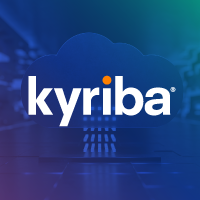 https://treasuryxl.com/wp-content/uploads/2021/10/News-Feature-2.png
200
200
treasuryXL
https://treasuryxl.com/wp-content/uploads/2018/07/treasuryXL-logo-300x56.png
treasuryXL2021-10-27 07:00:312022-12-29 13:29:50Kyriba Fact Sheet – Payment Errors & Compliance Violations
https://treasuryxl.com/wp-content/uploads/2021/10/News-Feature-2.png
200
200
treasuryXL
https://treasuryxl.com/wp-content/uploads/2018/07/treasuryXL-logo-300x56.png
treasuryXL2021-10-27 07:00:312022-12-29 13:29:50Kyriba Fact Sheet – Payment Errors & Compliance Violations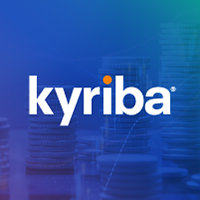 https://treasuryxl.com/wp-content/uploads/2021/10/News-Feature-1.png
200
200
treasuryXL
https://treasuryxl.com/wp-content/uploads/2018/07/treasuryXL-logo-300x56.png
treasuryXL2021-10-25 07:00:132022-12-29 13:20:36Kyriba Unlocks Access to $15 Trillion Payment Network with Launch of Open API Platform
https://treasuryxl.com/wp-content/uploads/2021/10/News-Feature-1.png
200
200
treasuryXL
https://treasuryxl.com/wp-content/uploads/2018/07/treasuryXL-logo-300x56.png
treasuryXL2021-10-25 07:00:132022-12-29 13:20:36Kyriba Unlocks Access to $15 Trillion Payment Network with Launch of Open API Platform https://treasuryxl.com/wp-content/uploads/2021/05/EuroFinance-2021_.jpg
200
200
treasuryXL
https://treasuryxl.com/wp-content/uploads/2018/07/treasuryXL-logo-300x56.png
treasuryXL2021-09-22 07:00:222021-08-11 15:04:41Your Last Call | International Treasury Management Virtual Week | September 27 – October 1
https://treasuryxl.com/wp-content/uploads/2021/05/EuroFinance-2021_.jpg
200
200
treasuryXL
https://treasuryxl.com/wp-content/uploads/2018/07/treasuryXL-logo-300x56.png
treasuryXL2021-09-22 07:00:222021-08-11 15:04:41Your Last Call | International Treasury Management Virtual Week | September 27 – October 1 https://treasuryxl.com/wp-content/uploads/2021/09/kyriba-200.png
200
200
treasuryXL
https://treasuryxl.com/wp-content/uploads/2018/07/treasuryXL-logo-300x56.png
treasuryXL2021-09-20 07:00:202021-09-17 09:27:37Readying Treasury for Hybrid Work
https://treasuryxl.com/wp-content/uploads/2021/09/kyriba-200.png
200
200
treasuryXL
https://treasuryxl.com/wp-content/uploads/2018/07/treasuryXL-logo-300x56.png
treasuryXL2021-09-20 07:00:202021-09-17 09:27:37Readying Treasury for Hybrid Work https://treasuryxl.com/wp-content/uploads/2021/09/Kyriba-featured-image-report.png
200
200
treasuryXL
https://treasuryxl.com/wp-content/uploads/2018/07/treasuryXL-logo-300x56.png
treasuryXL2021-09-06 07:00:022022-12-29 13:56:01Strategic Treasurer’s Analyst Report Series: Treasury and Risk Management Systems
https://treasuryxl.com/wp-content/uploads/2021/09/Kyriba-featured-image-report.png
200
200
treasuryXL
https://treasuryxl.com/wp-content/uploads/2018/07/treasuryXL-logo-300x56.png
treasuryXL2021-09-06 07:00:022022-12-29 13:56:01Strategic Treasurer’s Analyst Report Series: Treasury and Risk Management Systems https://treasuryxl.com/wp-content/uploads/2021/08/fraud-post.png
200
200
treasuryXL
https://treasuryxl.com/wp-content/uploads/2018/07/treasuryXL-logo-300x56.png
treasuryXL2021-08-23 07:00:302022-12-29 13:58:33A Culture of Fraud Prevention: It’s Everyone’s Responsibility
https://treasuryxl.com/wp-content/uploads/2021/08/fraud-post.png
200
200
treasuryXL
https://treasuryxl.com/wp-content/uploads/2018/07/treasuryXL-logo-300x56.png
treasuryXL2021-08-23 07:00:302022-12-29 13:58:33A Culture of Fraud Prevention: It’s Everyone’s Responsibility https://treasuryxl.com/wp-content/uploads/2021/07/Pearls.png
200
200
treasuryXL
https://treasuryxl.com/wp-content/uploads/2018/07/treasuryXL-logo-300x56.png
treasuryXL2021-08-03 07:00:482022-12-29 14:08:22Cloudiness in Libor Transition?
https://treasuryxl.com/wp-content/uploads/2021/07/Pearls.png
200
200
treasuryXL
https://treasuryxl.com/wp-content/uploads/2018/07/treasuryXL-logo-300x56.png
treasuryXL2021-08-03 07:00:482022-12-29 14:08:22Cloudiness in Libor Transition?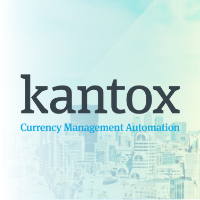 https://treasuryxl.com/wp-content/uploads/2021/07/Kantox-Press-Release.png
200
200
treasuryXL
https://treasuryxl.com/wp-content/uploads/2018/07/treasuryXL-logo-300x56.png
treasuryXL2021-07-28 07:00:012022-12-29 14:36:44Press release | Kantox joins the treasuryXL community as Premium Partner
https://treasuryxl.com/wp-content/uploads/2021/07/Kantox-Press-Release.png
200
200
treasuryXL
https://treasuryxl.com/wp-content/uploads/2018/07/treasuryXL-logo-300x56.png
treasuryXL2021-07-28 07:00:012022-12-29 14:36:44Press release | Kantox joins the treasuryXL community as Premium Partner https://treasuryxl.com/wp-content/uploads/2021/07/abde.png
433
750
treasuryXL
https://treasuryxl.com/wp-content/uploads/2018/07/treasuryXL-logo-300x56.png
treasuryXL2021-07-14 07:00:272022-12-29 13:07:09E-Book: ERP Migration | How to Simplify and Accelerate Bank Integration
https://treasuryxl.com/wp-content/uploads/2021/07/abde.png
433
750
treasuryXL
https://treasuryxl.com/wp-content/uploads/2018/07/treasuryXL-logo-300x56.png
treasuryXL2021-07-14 07:00:272022-12-29 13:07:09E-Book: ERP Migration | How to Simplify and Accelerate Bank Integration https://treasuryxl.com/wp-content/uploads/2021/06/sorry.png
557
946
treasuryXL
https://treasuryxl.com/wp-content/uploads/2018/07/treasuryXL-logo-300x56.png
treasuryXL2021-06-28 07:00:292022-12-29 13:18:21How a Treasurer can really add Value
https://treasuryxl.com/wp-content/uploads/2021/06/sorry.png
557
946
treasuryXL
https://treasuryxl.com/wp-content/uploads/2018/07/treasuryXL-logo-300x56.png
treasuryXL2021-06-28 07:00:292022-12-29 13:18:21How a Treasurer can really add Value https://treasuryxl.com/wp-content/uploads/2021/06/Bitcoinnn.png
552
941
treasuryXL
https://treasuryxl.com/wp-content/uploads/2018/07/treasuryXL-logo-300x56.png
treasuryXL2021-06-15 07:00:182022-12-29 13:23:22Digital Currencies | Not Ready for Corporate Treasury
https://treasuryxl.com/wp-content/uploads/2021/06/Bitcoinnn.png
552
941
treasuryXL
https://treasuryxl.com/wp-content/uploads/2018/07/treasuryXL-logo-300x56.png
treasuryXL2021-06-15 07:00:182022-12-29 13:23:22Digital Currencies | Not Ready for Corporate Treasury https://treasuryxl.com/wp-content/uploads/2021/05/raakt.png
504
949
treasuryXL
https://treasuryxl.com/wp-content/uploads/2018/07/treasuryXL-logo-300x56.png
treasuryXL2021-06-01 07:00:122022-12-29 13:23:43Why CFOs Should Foster Stronger Relationships with Banks
https://treasuryxl.com/wp-content/uploads/2021/05/raakt.png
504
949
treasuryXL
https://treasuryxl.com/wp-content/uploads/2018/07/treasuryXL-logo-300x56.png
treasuryXL2021-06-01 07:00:122022-12-29 13:23:43Why CFOs Should Foster Stronger Relationships with Banks https://treasuryxl.com/wp-content/uploads/2021/05/searching.png
200
200
treasuryXL
https://treasuryxl.com/wp-content/uploads/2018/07/treasuryXL-logo-300x56.png
treasuryXL2021-05-19 07:00:062021-05-17 09:57:28International Treasury Management Virtual Week | Celebrating 30 years as the world’s leading treasury event
https://treasuryxl.com/wp-content/uploads/2021/05/searching.png
200
200
treasuryXL
https://treasuryxl.com/wp-content/uploads/2018/07/treasuryXL-logo-300x56.png
treasuryXL2021-05-19 07:00:062021-05-17 09:57:28International Treasury Management Virtual Week | Celebrating 30 years as the world’s leading treasury event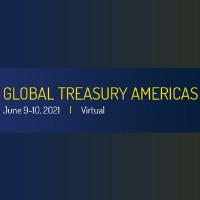 https://treasuryxl.com/wp-content/uploads/2021/05/Global-Treasury-.png
200
200
treasuryXL
https://treasuryxl.com/wp-content/uploads/2018/07/treasuryXL-logo-300x56.png
treasuryXL2021-05-12 07:00:062021-05-10 10:52:05Global Treasury Americas | Planning the post-pandemic Treasury
https://treasuryxl.com/wp-content/uploads/2021/05/Global-Treasury-.png
200
200
treasuryXL
https://treasuryxl.com/wp-content/uploads/2018/07/treasuryXL-logo-300x56.png
treasuryXL2021-05-12 07:00:062021-05-10 10:52:05Global Treasury Americas | Planning the post-pandemic Treasury https://treasuryxl.com/wp-content/uploads/2021/05/AB.png
200
200
treasuryXL
https://treasuryxl.com/wp-content/uploads/2018/07/treasuryXL-logo-300x56.png
treasuryXL2021-05-10 07:00:532023-02-07 10:03:25Liquidity Benefits From Dynamic Discounting in Supply Chain Financing
https://treasuryxl.com/wp-content/uploads/2021/05/AB.png
200
200
treasuryXL
https://treasuryxl.com/wp-content/uploads/2018/07/treasuryXL-logo-300x56.png
treasuryXL2021-05-10 07:00:532023-02-07 10:03:25Liquidity Benefits From Dynamic Discounting in Supply Chain Financing https://treasuryxl.com/wp-content/uploads/2021/04/asdfgh.png
200
200
treasuryXL
https://treasuryxl.com/wp-content/uploads/2018/07/treasuryXL-logo-300x56.png
treasuryXL2021-04-20 07:00:592022-12-29 13:03:51How to Prepare for a New Era of Real-time Banking and Payment Services
https://treasuryxl.com/wp-content/uploads/2021/04/asdfgh.png
200
200
treasuryXL
https://treasuryxl.com/wp-content/uploads/2018/07/treasuryXL-logo-300x56.png
treasuryXL2021-04-20 07:00:592022-12-29 13:03:51How to Prepare for a New Era of Real-time Banking and Payment Services https://treasuryxl.com/wp-content/uploads/2021/03/Knipsel.png
542
937
treasuryXL
https://treasuryxl.com/wp-content/uploads/2018/07/treasuryXL-logo-300x56.png
treasuryXL2021-03-30 07:00:282022-12-29 13:19:42Centralising Payments and Fraud Management with Kyriba – Şişecam
https://treasuryxl.com/wp-content/uploads/2021/03/Knipsel.png
542
937
treasuryXL
https://treasuryxl.com/wp-content/uploads/2018/07/treasuryXL-logo-300x56.png
treasuryXL2021-03-30 07:00:282022-12-29 13:19:42Centralising Payments and Fraud Management with Kyriba – Şişecam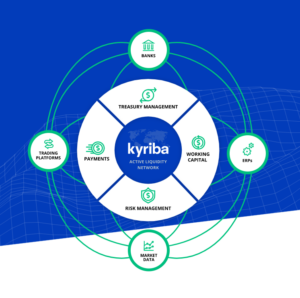 https://treasuryxl.com/wp-content/uploads/2021/03/kyriba-circle.png
740
746
treasuryXL
https://treasuryxl.com/wp-content/uploads/2018/07/treasuryXL-logo-300x56.png
treasuryXL2021-03-22 07:00:362022-12-29 13:13:595 essential questions to let Kyriba manage TRILLIONS of dollars every day
https://treasuryxl.com/wp-content/uploads/2021/03/kyriba-circle.png
740
746
treasuryXL
https://treasuryxl.com/wp-content/uploads/2018/07/treasuryXL-logo-300x56.png
treasuryXL2021-03-22 07:00:362022-12-29 13:13:595 essential questions to let Kyriba manage TRILLIONS of dollars every day https://treasuryxl.com/wp-content/uploads/2021/03/Let-me-down.png
544
939
treasuryXL
https://treasuryxl.com/wp-content/uploads/2018/07/treasuryXL-logo-300x56.png
treasuryXL2021-03-15 07:00:512022-12-29 13:31:23How to anticipate Liquidity risks to secure the Cash Flow
https://treasuryxl.com/wp-content/uploads/2021/03/Let-me-down.png
544
939
treasuryXL
https://treasuryxl.com/wp-content/uploads/2018/07/treasuryXL-logo-300x56.png
treasuryXL2021-03-15 07:00:512022-12-29 13:31:23How to anticipate Liquidity risks to secure the Cash Flow https://treasuryxl.com/wp-content/uploads/2021/02/kw.png
478
469
treasuryXL
https://treasuryxl.com/wp-content/uploads/2018/07/treasuryXL-logo-300x56.png
treasuryXL2021-02-25 15:47:542021-02-25 15:47:54Kyriba Webinar: How Connectivity-as-a-Service Can Help In ERP Migration
https://treasuryxl.com/wp-content/uploads/2021/02/kw.png
478
469
treasuryXL
https://treasuryxl.com/wp-content/uploads/2018/07/treasuryXL-logo-300x56.png
treasuryXL2021-02-25 15:47:542021-02-25 15:47:54Kyriba Webinar: How Connectivity-as-a-Service Can Help In ERP Migration https://treasuryxl.com/wp-content/uploads/2021/02/cASH-FLSOFJHD.png
200
200
treasuryXL
https://treasuryxl.com/wp-content/uploads/2018/07/treasuryXL-logo-300x56.png
treasuryXL2021-02-15 07:00:322022-12-29 14:20:117 steps on how to make Cash Flow forecast a success
https://treasuryxl.com/wp-content/uploads/2021/02/cASH-FLSOFJHD.png
200
200
treasuryXL
https://treasuryxl.com/wp-content/uploads/2018/07/treasuryXL-logo-300x56.png
treasuryXL2021-02-15 07:00:322022-12-29 14:20:117 steps on how to make Cash Flow forecast a success https://treasuryxl.com/wp-content/uploads/2021/01/wwd-scaled.jpg
1706
2560
treasuryXL
https://treasuryxl.com/wp-content/uploads/2018/07/treasuryXL-logo-300x56.png
treasuryXL2021-02-02 07:00:162021-02-05 14:23:51The Case for a Global Payment Hub
https://treasuryxl.com/wp-content/uploads/2021/01/wwd-scaled.jpg
1706
2560
treasuryXL
https://treasuryxl.com/wp-content/uploads/2018/07/treasuryXL-logo-300x56.png
treasuryXL2021-02-02 07:00:162021-02-05 14:23:51The Case for a Global Payment Hub https://treasuryxl.com/wp-content/uploads/2021/01/SAP.png
540
936
treasuryXL
https://treasuryxl.com/wp-content/uploads/2018/07/treasuryXL-logo-300x56.png
treasuryXL2021-01-19 07:00:072021-01-18 12:00:46Making a Successful Transformation to SAP S/4HANA
https://treasuryxl.com/wp-content/uploads/2021/01/SAP.png
540
936
treasuryXL
https://treasuryxl.com/wp-content/uploads/2018/07/treasuryXL-logo-300x56.png
treasuryXL2021-01-19 07:00:072021-01-18 12:00:46Making a Successful Transformation to SAP S/4HANA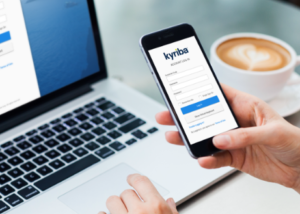 https://treasuryxl.com/wp-content/uploads/2020/10/ssa-e1604398224770.png
329
461
treasuryXL
https://treasuryxl.com/wp-content/uploads/2018/07/treasuryXL-logo-300x56.png
treasuryXL2020-11-04 07:00:452020-11-04 12:58:45Kyriba Webinar: Modernising Global Corporate Payments to Prevent Fraud
https://treasuryxl.com/wp-content/uploads/2020/10/ssa-e1604398224770.png
329
461
treasuryXL
https://treasuryxl.com/wp-content/uploads/2018/07/treasuryXL-logo-300x56.png
treasuryXL2020-11-04 07:00:452020-11-04 12:58:45Kyriba Webinar: Modernising Global Corporate Payments to Prevent Fraud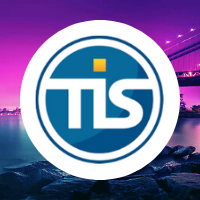 https://treasuryxl.com/wp-content/uploads/2020/11/Partner-Interview-Series_Featured-Image-TIS.png
200
200
treasuryXL
https://treasuryxl.com/wp-content/uploads/2018/07/treasuryXL-logo-300x56.png
treasuryXL2020-11-03 07:00:212020-11-02 18:10:39Partner Interview Series | The deeper dive with Treasury Intelligence Solutions (TIS)
https://treasuryxl.com/wp-content/uploads/2020/11/Partner-Interview-Series_Featured-Image-TIS.png
200
200
treasuryXL
https://treasuryxl.com/wp-content/uploads/2018/07/treasuryXL-logo-300x56.png
treasuryXL2020-11-03 07:00:212020-11-02 18:10:39Partner Interview Series | The deeper dive with Treasury Intelligence Solutions (TIS) https://treasuryxl.com/wp-content/uploads/2020/10/Ontwerp-zonder-titel-21.png
200
200
treasuryXL
https://treasuryxl.com/wp-content/uploads/2018/07/treasuryXL-logo-300x56.png
treasuryXL2020-10-07 09:00:082021-03-23 16:20:22KYRIBA Global Summit
https://treasuryxl.com/wp-content/uploads/2020/10/Ontwerp-zonder-titel-21.png
200
200
treasuryXL
https://treasuryxl.com/wp-content/uploads/2018/07/treasuryXL-logo-300x56.png
treasuryXL2020-10-07 09:00:082021-03-23 16:20:22KYRIBA Global Summit https://treasuryxl.com/wp-content/uploads/2020/08/Partner-Interview-Series_Featured-Image-Kyriba.png
200
200
treasuryXL
https://treasuryxl.com/wp-content/uploads/2018/07/treasuryXL-logo-300x56.png
treasuryXL2020-09-01 07:00:352020-08-27 16:02:49Partner Interview Series | A deeper dive with Paul Simpson from Kyriba
https://treasuryxl.com/wp-content/uploads/2020/08/Partner-Interview-Series_Featured-Image-Kyriba.png
200
200
treasuryXL
https://treasuryxl.com/wp-content/uploads/2018/07/treasuryXL-logo-300x56.png
treasuryXL2020-09-01 07:00:352020-08-27 16:02:49Partner Interview Series | A deeper dive with Paul Simpson from Kyriba https://treasuryxl.com/wp-content/uploads/2020/08/IJD.png
200
200
treasuryXL
https://treasuryxl.com/wp-content/uploads/2018/07/treasuryXL-logo-300x56.png
treasuryXL2020-08-17 07:00:152020-08-13 11:54:56Active Liquidity Podcast – How AI Protects Payments During COVID19
https://treasuryxl.com/wp-content/uploads/2020/08/IJD.png
200
200
treasuryXL
https://treasuryxl.com/wp-content/uploads/2018/07/treasuryXL-logo-300x56.png
treasuryXL2020-08-17 07:00:152020-08-13 11:54:56Active Liquidity Podcast – How AI Protects Payments During COVID19 https://treasuryxl.com/wp-content/uploads/2020/06/jng.jpg
369
500
treasuryXL
https://treasuryxl.com/wp-content/uploads/2018/07/treasuryXL-logo-300x56.png
treasuryXL2020-06-24 07:00:302023-06-27 10:28:46Trade Finance and ICC Incoterms
https://treasuryxl.com/wp-content/uploads/2020/06/jng.jpg
369
500
treasuryXL
https://treasuryxl.com/wp-content/uploads/2018/07/treasuryXL-logo-300x56.png
treasuryXL2020-06-24 07:00:302023-06-27 10:28:46Trade Finance and ICC Incoterms https://treasuryxl.com/wp-content/uploads/2020/04/Kyriba-200x200-color.png
200
200
treasuryXL
https://treasuryxl.com/wp-content/uploads/2018/07/treasuryXL-logo-300x56.png
treasuryXL2020-06-22 16:06:302021-03-23 16:13:51Webinar | July 16 | Mitigating Fraud With a Corporate Payment Hub
https://treasuryxl.com/wp-content/uploads/2020/04/Kyriba-200x200-color.png
200
200
treasuryXL
https://treasuryxl.com/wp-content/uploads/2018/07/treasuryXL-logo-300x56.png
treasuryXL2020-06-22 16:06:302021-03-23 16:13:51Webinar | July 16 | Mitigating Fraud With a Corporate Payment Hub https://treasuryxl.com/wp-content/uploads/2020/06/hjsa-scaled.jpg
2560
2031
treasuryXL
https://treasuryxl.com/wp-content/uploads/2018/07/treasuryXL-logo-300x56.png
treasuryXL2020-06-15 07:00:282023-06-27 10:28:53Trade Finance and Compliance | How to properly assess risks
https://treasuryxl.com/wp-content/uploads/2020/06/hjsa-scaled.jpg
2560
2031
treasuryXL
https://treasuryxl.com/wp-content/uploads/2018/07/treasuryXL-logo-300x56.png
treasuryXL2020-06-15 07:00:282023-06-27 10:28:53Trade Finance and Compliance | How to properly assess risks https://treasuryxl.com/wp-content/uploads/2020/06/teaser-kyriba.png
200
200
treasuryXL
https://treasuryxl.com/wp-content/uploads/2018/07/treasuryXL-logo-300x56.png
treasuryXL2020-06-11 09:45:312020-06-11 10:23:107 Experts on Activating Liquidity – a Guide to Leveraging Technology to Generate New Growth
https://treasuryxl.com/wp-content/uploads/2020/06/teaser-kyriba.png
200
200
treasuryXL
https://treasuryxl.com/wp-content/uploads/2018/07/treasuryXL-logo-300x56.png
treasuryXL2020-06-11 09:45:312020-06-11 10:23:107 Experts on Activating Liquidity – a Guide to Leveraging Technology to Generate New Growth https://treasuryxl.com/wp-content/uploads/2020/06/xe116.png
200
200
treasuryXL
https://treasuryxl.com/wp-content/uploads/2018/07/treasuryXL-logo-300x56.png
treasuryXL2020-06-11 07:00:562022-12-28 14:24:54Do You Know Your Business’s Foreign Exchange Risks?
https://treasuryxl.com/wp-content/uploads/2020/06/xe116.png
200
200
treasuryXL
https://treasuryxl.com/wp-content/uploads/2018/07/treasuryXL-logo-300x56.png
treasuryXL2020-06-11 07:00:562022-12-28 14:24:54Do You Know Your Business’s Foreign Exchange Risks? https://treasuryxl.com/wp-content/uploads/2020/06/fx-niki.png
200
200
treasuryXL
https://treasuryxl.com/wp-content/uploads/2018/07/treasuryXL-logo-300x56.png
treasuryXL2020-06-10 07:00:002022-12-28 14:00:11What does experience in Treasury get you?
https://treasuryxl.com/wp-content/uploads/2020/06/fx-niki.png
200
200
treasuryXL
https://treasuryxl.com/wp-content/uploads/2018/07/treasuryXL-logo-300x56.png
treasuryXL2020-06-10 07:00:002022-12-28 14:00:11What does experience in Treasury get you? https://treasuryxl.com/wp-content/uploads/2020/05/tis-june-5.png
200
200
treasuryXL
https://treasuryxl.com/wp-content/uploads/2018/07/treasuryXL-logo-300x56.png
treasuryXL2020-05-29 10:05:262021-03-23 16:14:59Live Demo: Ready for fraud prevention? – TIS shows you how!
https://treasuryxl.com/wp-content/uploads/2020/05/tis-june-5.png
200
200
treasuryXL
https://treasuryxl.com/wp-content/uploads/2018/07/treasuryXL-logo-300x56.png
treasuryXL2020-05-29 10:05:262021-03-23 16:14:59Live Demo: Ready for fraud prevention? – TIS shows you how! https://treasuryxl.com/wp-content/uploads/2020/04/xe-articld.png
200
200
treasuryXL
https://treasuryxl.com/wp-content/uploads/2018/07/treasuryXL-logo-300x56.png
treasuryXL2020-05-14 07:00:322020-05-13 14:20:33When Should I Make a Money Transfer?
https://treasuryxl.com/wp-content/uploads/2020/04/xe-articld.png
200
200
treasuryXL
https://treasuryxl.com/wp-content/uploads/2018/07/treasuryXL-logo-300x56.png
treasuryXL2020-05-14 07:00:322020-05-13 14:20:33When Should I Make a Money Transfer? https://treasuryxl.com/wp-content/uploads/2020/05/kyriba-webinar.png
200
200
treasuryXL
https://treasuryxl.com/wp-content/uploads/2018/07/treasuryXL-logo-300x56.png
treasuryXL2020-05-11 08:30:082021-03-23 16:10:44DELOITTE & KYRIBA WEBINAR | Today’s Payments Landscape: Reducing Costs & Fraud, Increasing Productivity
https://treasuryxl.com/wp-content/uploads/2020/05/kyriba-webinar.png
200
200
treasuryXL
https://treasuryxl.com/wp-content/uploads/2018/07/treasuryXL-logo-300x56.png
treasuryXL2020-05-11 08:30:082021-03-23 16:10:44DELOITTE & KYRIBA WEBINAR | Today’s Payments Landscape: Reducing Costs & Fraud, Increasing Productivity https://treasuryxl.com/wp-content/uploads/2020/05/xe65.png
200
200
treasuryXL
https://treasuryxl.com/wp-content/uploads/2018/07/treasuryXL-logo-300x56.png
treasuryXL2020-05-07 07:00:432020-05-06 15:59:57Send to Receive: Money Transfer Timings Explained
https://treasuryxl.com/wp-content/uploads/2020/05/xe65.png
200
200
treasuryXL
https://treasuryxl.com/wp-content/uploads/2018/07/treasuryXL-logo-300x56.png
treasuryXL2020-05-07 07:00:432020-05-06 15:59:57Send to Receive: Money Transfer Timings Explained https://treasuryxl.com/wp-content/uploads/2020/04/xe-304.png
200
200
treasuryXL
https://treasuryxl.com/wp-content/uploads/2018/07/treasuryXL-logo-300x56.png
treasuryXL2020-05-01 07:00:162020-04-30 10:16:57Types of Money Transfer: All About Market Orders
https://treasuryxl.com/wp-content/uploads/2020/04/xe-304.png
200
200
treasuryXL
https://treasuryxl.com/wp-content/uploads/2018/07/treasuryXL-logo-300x56.png
treasuryXL2020-05-01 07:00:162020-04-30 10:16:57Types of Money Transfer: All About Market Orders https://treasuryxl.com/wp-content/uploads/2019/11/pexels-photo-313782.jpeg
1500
2306
treasuryXL
https://treasuryxl.com/wp-content/uploads/2018/07/treasuryXL-logo-300x56.png
treasuryXL2020-04-28 07:00:492020-04-28 09:08:30The ultimate battle between Letter of Credit and Credit Insurance
https://treasuryxl.com/wp-content/uploads/2019/11/pexels-photo-313782.jpeg
1500
2306
treasuryXL
https://treasuryxl.com/wp-content/uploads/2018/07/treasuryXL-logo-300x56.png
treasuryXL2020-04-28 07:00:492020-04-28 09:08:30The ultimate battle between Letter of Credit and Credit Insurance https://treasuryxl.com/wp-content/uploads/2020/04/xe234-200x200-1.png
200
200
treasuryXL
https://treasuryxl.com/wp-content/uploads/2018/07/treasuryXL-logo-300x56.png
treasuryXL2020-04-23 10:42:552020-04-23 10:42:55Money Transfer Spotlight: What You Should Know About Forward Contracts
https://treasuryxl.com/wp-content/uploads/2020/04/xe234-200x200-1.png
200
200
treasuryXL
https://treasuryxl.com/wp-content/uploads/2018/07/treasuryXL-logo-300x56.png
treasuryXL2020-04-23 10:42:552020-04-23 10:42:55Money Transfer Spotlight: What You Should Know About Forward Contracts https://treasuryxl.com/wp-content/uploads/2020/04/Kyriba-200x200-color.png
200
200
treasuryXL
https://treasuryxl.com/wp-content/uploads/2018/07/treasuryXL-logo-300x56.png
treasuryXL2020-04-22 10:04:362020-04-22 10:02:13treasuryXL announces partnership with Kyriba to strengthen dissemination of the latest trends about treasury
https://treasuryxl.com/wp-content/uploads/2020/04/Kyriba-200x200-color.png
200
200
treasuryXL
https://treasuryxl.com/wp-content/uploads/2018/07/treasuryXL-logo-300x56.png
treasuryXL2020-04-22 10:04:362020-04-22 10:02:13treasuryXL announces partnership with Kyriba to strengthen dissemination of the latest trends about treasury https://treasuryxl.com/wp-content/uploads/2020/04/freight.png
200
200
treasuryXL
https://treasuryxl.com/wp-content/uploads/2018/07/treasuryXL-logo-300x56.png
treasuryXL2020-04-21 07:00:412022-12-28 14:22:01How to simplify Procurement and Finance in the Supply Chain
https://treasuryxl.com/wp-content/uploads/2020/04/freight.png
200
200
treasuryXL
https://treasuryxl.com/wp-content/uploads/2018/07/treasuryXL-logo-300x56.png
treasuryXL2020-04-21 07:00:412022-12-28 14:22:01How to simplify Procurement and Finance in the Supply Chain https://treasuryxl.com/wp-content/uploads/2020/04/Knipsel.PNG-akjhas.png
559
974
treasuryXL
https://treasuryxl.com/wp-content/uploads/2018/07/treasuryXL-logo-300x56.png
treasuryXL2020-04-17 07:00:492020-04-16 14:02:10Money Transfer vs. Wire Transfer: What’s Really the Difference?
https://treasuryxl.com/wp-content/uploads/2020/04/Knipsel.PNG-akjhas.png
559
974
treasuryXL
https://treasuryxl.com/wp-content/uploads/2018/07/treasuryXL-logo-300x56.png
treasuryXL2020-04-17 07:00:492020-04-16 14:02:10Money Transfer vs. Wire Transfer: What’s Really the Difference? https://treasuryxl.com/wp-content/uploads/2020/04/xe2420.png
200
200
treasuryXL
https://treasuryxl.com/wp-content/uploads/2018/07/treasuryXL-logo-300x56.png
treasuryXL2020-04-02 11:28:552020-04-02 11:28:55How to Recognize and Avoid Online Fraud Attempts
https://treasuryxl.com/wp-content/uploads/2020/04/xe2420.png
200
200
treasuryXL
https://treasuryxl.com/wp-content/uploads/2018/07/treasuryXL-logo-300x56.png
treasuryXL2020-04-02 11:28:552020-04-02 11:28:55How to Recognize and Avoid Online Fraud Attempts https://treasuryxl.com/wp-content/uploads/2019/12/frank-mckenna-sSMR7xAdgj0-unsplash-scaled.jpg
1703
2560
treasuryXL
https://treasuryxl.com/wp-content/uploads/2018/07/treasuryXL-logo-300x56.png
treasuryXL2019-12-27 07:00:422020-06-24 15:28:18Digitalization enhances the strategic position of the treasurer
https://treasuryxl.com/wp-content/uploads/2019/12/frank-mckenna-sSMR7xAdgj0-unsplash-scaled.jpg
1703
2560
treasuryXL
https://treasuryxl.com/wp-content/uploads/2018/07/treasuryXL-logo-300x56.png
treasuryXL2019-12-27 07:00:422020-06-24 15:28:18Digitalization enhances the strategic position of the treasurer https://treasuryxl.com/wp-content/uploads/2019/11/cyber-201x181.png
181
201
treasuryXL
https://treasuryxl.com/wp-content/uploads/2018/07/treasuryXL-logo-300x56.png
treasuryXL2019-11-05 14:09:132019-11-26 16:29:58How to stay ahead of emerging threats
https://treasuryxl.com/wp-content/uploads/2019/11/cyber-201x181.png
181
201
treasuryXL
https://treasuryxl.com/wp-content/uploads/2018/07/treasuryXL-logo-300x56.png
treasuryXL2019-11-05 14:09:132019-11-26 16:29:58How to stay ahead of emerging threats https://treasuryxl.com/wp-content/uploads/2018/02/Internal-fraud.png
200
200
treasuryXL
https://treasuryxl.com/wp-content/uploads/2018/07/treasuryXL-logo-300x56.png
treasuryXL2018-02-22 09:00:012019-11-12 16:48:57Internal Fraud – or how not to cheat yourself
https://treasuryxl.com/wp-content/uploads/2018/02/Internal-fraud.png
200
200
treasuryXL
https://treasuryxl.com/wp-content/uploads/2018/07/treasuryXL-logo-300x56.png
treasuryXL2018-02-22 09:00:012019-11-12 16:48:57Internal Fraud – or how not to cheat yourself https://treasuryxl.com/wp-content/uploads/2017/10/Cybersecurity-1-e1508222420763.jpg
200
200
treasuryXL
https://treasuryxl.com/wp-content/uploads/2018/07/treasuryXL-logo-300x56.png
treasuryXL2017-10-17 08:30:162022-12-28 14:28:48Cybersecurity & corporate treasury – not your favourite, but beware!
https://treasuryxl.com/wp-content/uploads/2017/10/Cybersecurity-1-e1508222420763.jpg
200
200
treasuryXL
https://treasuryxl.com/wp-content/uploads/2018/07/treasuryXL-logo-300x56.png
treasuryXL2017-10-17 08:30:162022-12-28 14:28:48Cybersecurity & corporate treasury – not your favourite, but beware! https://treasuryxl.com/wp-content/uploads/2017/03/Payment-fraud-prevention.jpg
200
200
treasuryXL
https://treasuryxl.com/wp-content/uploads/2018/07/treasuryXL-logo-300x56.png
treasuryXL2017-03-29 07:30:092020-04-08 10:19:54How to combat Payment Fraud
https://treasuryxl.com/wp-content/uploads/2017/03/Payment-fraud-prevention.jpg
200
200
treasuryXL
https://treasuryxl.com/wp-content/uploads/2018/07/treasuryXL-logo-300x56.png
treasuryXL2017-03-29 07:30:092020-04-08 10:19:54How to combat Payment Fraud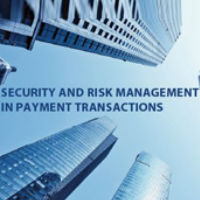 https://treasuryxl.com/wp-content/uploads/2016/12/TIS-II.jpg
200
200
treasuryXL
https://treasuryxl.com/wp-content/uploads/2018/07/treasuryXL-logo-300x56.png
treasuryXL2017-02-13 07:30:252020-12-09 09:43:49Payment fraud – how companies can protect themselves
https://treasuryxl.com/wp-content/uploads/2016/12/TIS-II.jpg
200
200
treasuryXL
https://treasuryxl.com/wp-content/uploads/2018/07/treasuryXL-logo-300x56.png
treasuryXL2017-02-13 07:30:252020-12-09 09:43:49Payment fraud – how companies can protect themselves https://treasuryxl.com/wp-content/uploads/2016/08/wolkenkrabber.jpg
200
200
treasuryXL
https://treasuryxl.com/wp-content/uploads/2018/07/treasuryXL-logo-300x56.png
treasuryXL2016-08-30 08:30:132020-04-08 10:21:47Payment fraud – Leoni case
https://treasuryxl.com/wp-content/uploads/2016/08/wolkenkrabber.jpg
200
200
treasuryXL
https://treasuryxl.com/wp-content/uploads/2018/07/treasuryXL-logo-300x56.png
treasuryXL2016-08-30 08:30:132020-04-08 10:21:47Payment fraud – Leoni case https://treasuryxl.com/wp-content/uploads/2016/08/wolkenkrabber.jpg
200
200
treasuryXL
https://treasuryxl.com/wp-content/uploads/2018/07/treasuryXL-logo-300x56.png
treasuryXL2016-08-05 08:30:022021-02-05 11:45:58How to avoid payment fraud?
https://treasuryxl.com/wp-content/uploads/2016/08/wolkenkrabber.jpg
200
200
treasuryXL
https://treasuryxl.com/wp-content/uploads/2018/07/treasuryXL-logo-300x56.png
treasuryXL2016-08-05 08:30:022021-02-05 11:45:58How to avoid payment fraud?Treasury Miscellaneous topics
New: treasuryXL MatchMaker
Disclaimer: This chatbot is in beta; occasional errors might occur. It doesn’t give financial advice, but it will do its best to connect you with the right treasuryXL expert or partner.
Not displaying right? Click here to open treasuryXL MatchMaker in a full page.
Newsletter & eBook
Subscribe to our free weekly newsletter and receive your 41 pages ‘easy-to-read’ eBook, What is Treasury?
Great news! treasuryXL’s live session recordings are now available on Spotify

Go to
Partner Program
Contact us
treasuryXL
Kaldenkerkerweg 22
5913 AE Venlo
The Netherlands
Email: info @[email protected]
Telephone & WhatsApp: +31 6 2732 8942
Subscribe
Newsletter & eBook
Subscribe to our free weekly newsletter and receive your 41 pages ‘easy-to-read’ eBook, What is Treasury?

